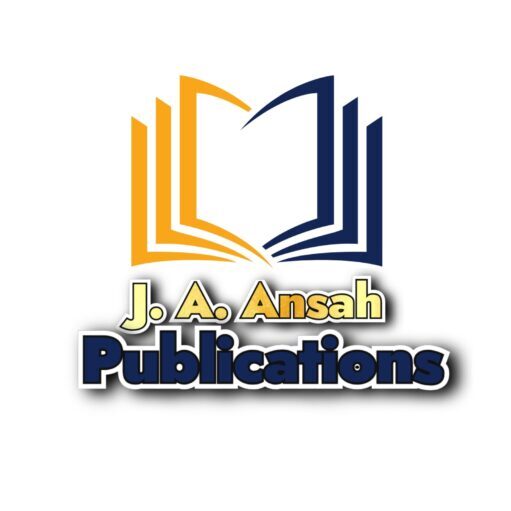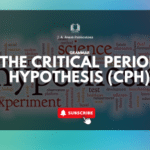THE CRITICAL PERIOD HYPOTHESIS (CPH)
The Critical Period Hypothesis (CPH) is a significant concept in linguistics, psychology and second language acquisition (SLA). It suggests that there is a biologically determined period during which language acquisition occurs most efficiently and effectively, and after this period, achieving native-like fluency becomes challenging.
Challenges to the Hypothesis
- Exceptions and Variability: Many late learners achieve near-native fluency, raising questions about the strictness of the critical period.
- Sensitive Period Hypothesis: Some researchers suggest a sensitive period rather than a rigid critical period, where language learning becomes more difficult with age but remains conceivable.
- Methodological Limitations: Studies often face challenges such as detaching the effects of age from other factors such as motivation, environment and exposure.
- Adult Success Stories: Examples like Joseph Conrad (who learned English as an adult and became a prominent writer) contradict the strict boundaries of CPH. Also, professional interpreters usually achieve exceptional proficiency, undermining deterministic views of age constraints.
- Inter-individual Variability: Cognitive abilities (e.g., memory, problem-solving skills) and socio-environmental factors frequently outweigh age in forecasting success.
- Lack of Definitive Closure: Critics contend that while there may be a decline, the closure of the critical period is neither sudden nor totally applicable to all language domains.
Implications for Language Teaching and Policy
- Educational Strategies: The CPH has influenced early childhood education policies, underlining the introduction of foreign language teaching at younger ages.
- Bilingualism and Multilingualism: CPH underscores the benefits of early bilingual upbringing for achieving fluency in multiple languages.
- Adult Language Learning: Understanding the limitations posed by the hypothesis can set in motion strategies adapted to adult learners, such as focusing on applied communication skills over native-like accuracy.
- Early Intervention Programmes: Governments often prioritise early language learning (e.g., immersion programmes) based on the CPH. For example, countries like Canada implement French immersion for English speakers at young ages.
- Lifelong Learning: CPH challenges the notion that adults cannot learn new languages. Pedagogical approaches emphasise using adults’ cognitive strengths, such as metalinguistic awareness.
- Policy vs. Practice: While policies encourage early exposure, they may neglect adult learners, restricting opportunities for persons who missed early language-learning windows.
Empirical Studies and Supporting Evidence
- Johnson and Newport (1989): Their seminal study established that age of acquisition meaningfully influences grammaticality judgment in second language learners.
- Flege et al. (1999): This study emphasised age-related differences in phonological acquisition.
- Studies on Feral Children: Cases like Genie and Victor of Aveyron offer real-life evidence supporting CPH in first language acquisition.
- Longitudinal Studies: Studies tracking L2 learners over decades show that early learners consistently surpass late learners, though exceptions occur.
- Critical Period for Sign Language: Deaf individuals exposed to sign language in infancy exhibit greater proficiency than those exposed later, paralleling findings in spoken language acquisition.
Birdsong, D. (2006). Age and second language acquisition and processing: A selective overview. Language Learning, 56(S1), 9–49.
Charmaz, K. (2017). Constructivist grounded theory. The Journal of Positive Psychology, 12(3), 299–300.
Curtiss, S. R. (1977). Genie: A linguistic study of a modern day “wild child.” Academic Press.
DeKeyser, R. M. (2000). The robustness of critical period effects in second language acquisition. Studies in Second Language Acquisition, 22(4), 499–533.
Flege, J. E., Yeni-Komshian, G. H., & Liu, S. (1999). Age constraints on second-language acquisition. Journal of Memory and Language, 41(1), 78–104.
Friedmann, N., & Rusou, D. (2015). Critical period for first language: The crucial role of language input during the first year of life. Current Opinion in Neurobiology, 35(JUNE), 27–34. https://doi.org/10.1016/j.conb.2015.06.003
Gadagbui, G. Y. (2014). The teaching of speech and langauge. Department of Special Education, UEW.
Hakuta, K., Bialystok, E., & Wiley, E. (2003). Critical evidence: A test of the critical-period hypothesis for second-language acquisition. Psychological Science, 14(1), 31–38.
Heward, W. L. (2013). Exceptional children: An introduction to special education. Pearson Educational Inc.
Johnson, J. S., & Newport, E. L. (1989). Critical period effects in second language learning: The influence of maturational state on the acquisition of English as a second language. Cognitive Psychology, 21(1), 60–99.
Leman, P., Bremner, A., Parke, R. D., & Gauvain, M. (2012). Developmental psychology. McGraw-Hill Education.
Lenneberg, E. H. (1967). Biological foundations of language. Wiley.
Mayberry, R. I., & Lock, E. (2003). Age constraints on first versus second language acquisition: Evidence for linguistic plasticity and epigenesis. Brain and Language, 87(3), 369–384.
Meisel, J. M. (2013). Sensitive phases in successive language acquisition: The critical period hypothesis revisited. In C. Boeckx & K. K. Grohmann (Eds.), Cambridge Handbook of Biologuistics (pp. 69–85). Cambridge University Press.
Newport, E. L. (1990). Maturational constraints on language learning. Cognitive Science, 14(1), 11–28.



